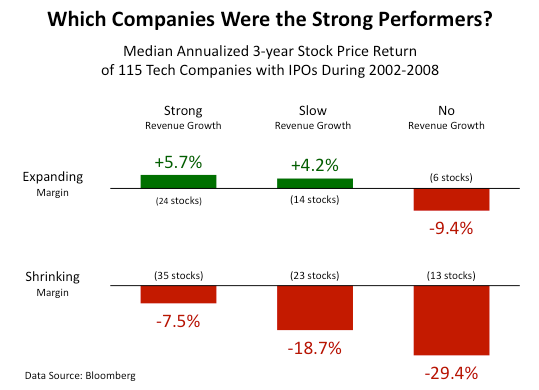The Only Strategy You Need For Investing In IPOs
Post on: 19 Июнь, 2015 No Comment

Because IPOs can be so risky, he recommended investing in them with an exchange-traded fund (ETF). He also described his favorite ETF for the job, the First Trust U.S. IPO Index Fund (NYSE: FPX ) .
I also think ETFs are the best way to play the exciting IPO market, but there’s another option that became available right around the time of Dave’s article. I thought investors should know about it because it provides broad exposure to IPOs and can be a great complement to FPX.
This newer ETF complements FPX in a couple of ways. First, it focuses a lot more on small and midsize companies, like data analysis software firm Splunk (Nasdaq: SPLK ) and payment processing technology provider Vantiv (Nasdaq: VNTV ) — two stocks that are among the newer ETF’s top 10 holdings. (By the way, both have been hot, climbing nearly 40% and 20%, respectively, since the newer fund’s launch last October.)
Another way the newer ETF can complement FPX is through sector diversification. Right now, it places greater emphasis on areas such as technology and real estate, whereas FPX is more heavily weighted toward cyclical stocks (whose price tends to follow the ups and downs of the wider economy) and energy.
The newer fund I’m referring to is the Renaissance IPO ETF (NYSE: IPO ). which is already up about 9% overall since it began trading just a few months ago. With about $25 million in total assets, IPO is still much smaller than the $392 million FPX fund. However, I’m certain it’ll soon attract many more investors as word about it spreads.
IPO’s goal is to track the Renaissance IPO Index, a benchmark designed to reflect the combined performance of the majority of U.S. companies that have recently gone public and typically aren’t yet included in other major indexes. In most cases, stocks are added to or deleted from the index on a quarterly basis.
However, sizable IPOs like Twitter (NYSE: TWTR ) and Facebook (Nasdaq: FB ) can be fast-tracked into the index if their market debuts don’t correspond with quarterly adjustments. Still, for the sake of risk management, such IPOs are excluded from the index during their first five trading days. Thus, investors aren’t exposed to the enormous price changes — negative or positive — that IPOs can exhibit out of the gate.
At some point, an IPO really isn’t an IPO anymore, which means it should be removed from the index. Renaissance does this after two years while First Trust hangs onto each stock for closer to three years (1,000 days), which is why the Renaissance IPO ETF should typically have a significantly greater proportion of smaller companies, just as it does right now. Because of the shorter holding period, the stocks in the fund’s benchmark will be much less apt to achieve large cap status before their time in the index is up.
Fund Distribution by Market Capitalization
Because they do things differently, IPO and FPX should also usually have very different portfolios. Indeed, other than having Facebook in common as their top holding, their top 10 holdings lists are nothing alike. Their sector compositions show quite a bit of variation, too, and should continue to over time.
Top 10 Holdings for IPO and FPX
IPO and FPX Sector Composition
IPO has substantially fewer stocks than FPX (59 versus 100), and I’d expect this difference to persist because of IPO’s two-year time limit for each holding. The two funds have identical expense ratios of 0.6%.
Risks to Consider: IPOs are among the riskiest investments, so even a large basket of them (like you’d find in an ETF) can be extremely volatile. Whether purchased in a fund or individually, IPOs require uncommonly strong nerves. Never invest more in IPOs than you can afford to lose.
Action to Take —> To help limit risk, consider using ETFs to invest in IPOs. Since the Renaissance IPO ETF and the First Trust U.S. IPO Index Fund complement each other so well, investors may want to split the money they’ve earmarked for IPOs evenly between the two funds. This strategy would result in some overlap, but IPO and FPX are more different than alike, so using them in combination should result in better diversification.
P.S. If you’re drawn to the potential that’s typical of many IPOs, wait until you see what StreetAuthority’s Andy Obermueller has been working on. Andy has identified five game-changing trends with the potential to revolutionize the way we live our lives — and make early investors a killing. To learn more about these developing technologies — and the stocks poised to capitalize — follow this link.














